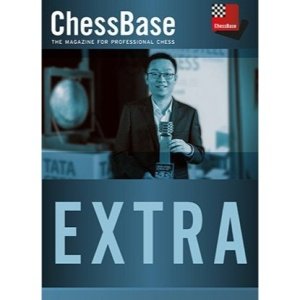Play the Hyper-Accelerated Dragon – Part 2 Modern Chess (Release November 2, 2024)
Original price was: $ 100.$ 3Current price is: $ 3.
OFF - 97%10000 in stock

Description
Reviews (0)
Description
After his highly successful Play the Hyper-Accelerated Dragon – Part 1, IM Siegfried Baumegger proceeds with the second part of his survey.
The starting position of the current course arises after 1.e4 c5 2.Nf3 g6 3.d4 cxd4

In this Database, we will deal with everything after 3.d4, except for the Maroczy Bind (see “Play the Hyper-Accelerated Dragon—Part 1“). We have a lot of theoretical ground to cover, and the general character of the play is sharp and concrete. For both sides, theoretical knowledge is mandatory to successfully navigate the various complex lines. Seen from our perspective: Black can often achieve excellent positions out of the opening if White is lazy!
Let’s take a look at the position on the diagram. The material is structured as follows:
SECTION 1 deals with 4.c3!? (with a transposition to the Morra-Gambit) and 4.Qxd4.
SECTION 2 deals with various lines after 4.Nxd4 Nc6 5.Nc3 Bg7.
SECTION 3 is dedicated to 6.Be3 Nf6 7.Bc4.
SECTION 4 Test – you are challenged to solve various tactical and strategic exercises.
Now, we shall take a look at how IM Baumegger presents the different sections of the course.
SECTION 1

This section features the moves 4.c3 and 4.Qxd4. The move 3.c3 which transposes to the Morra Gambit is one of White’s most aggressive options. Though players with the white pieces rarely go for it, it must be taken seriously. In the main line with 7.e5, Black successfully neutralizes White’s positional pressure by returning the pawn. With the rarely played 7.0-0 d6 8.e5!, White sacrifices a second pawn and often the exchange later on, resulting in sharp and unclear play.
The move 4.Qxd4 is a must-know territory for Black when playing 2…g6 – you are bound to face it sooner or later when playing the Hyper-Accelerated Dragon. Compared to 4.Nxd4, the character of the play is more concrete, so theoretical knowledge plays an important role. After 4…Nf6 White has some choice: the once-popular 5.Bb5?! and 5.c4 are covered under A). The main continuations are 5.e5 (B) and 5.Nc3 (C).
SECTION 2
The starting position of this section is being reached after 4.Nxd4 Nc6 5.Nc3 Bg7

When structuring the material, a large number of possible transpositions have to be taken into account. For instance, White can play Nb3 between moves 5 and 8 or play f2-f4 at several points. That’s why I decided on the following format:
Chapter 1: Lesser Alternatives to 5.Nc3 on move 5
Chapter 2: Fianchetto
Chapter 3: Lines with Nb3
Chapter 4: Lines with f4 or g4
Chapter 5: Various lines after 4.Nxd4 Nc6 5.Nc3 Bg7 6.Be3 Nf6 except 7.Bc4.
SECTION 3
This section is dedicated to the main line 5.Nc3 Bg7 6.Be3 Nf6 7.Bc4

This is White’s most popular continuation besides going for the Maroczy with 3.c4 or 5.c4. Usually, 7.Bc4 is played with aggressive intentions – go for long castling and attack on the kingside. Compared to the Dragon (starting with 2…d6), Black has several options to combat this. When assembling this course, the main challenge was to pick a sound line that hadn’t been covered previously in Modern Chess. A short overview: – Several different options – 7…0-0 8.Bb3 Re8!?, 8…a5, and 7…Qa5 – were analyzed by Alonso/Lorenzini in “Play the Accelerated Dragon – Systems with 5.Nc3”. – 7…0-0 8.Bb3 d6 9.f3 Qa5 10.Qd2 11.0-0-0 Nxd4 12.Bxd4 Be6, with a transposition to one of the current main lines of the Dragon, was analyzed by Alonso/Lorenzini and additionally by top theoretician Cheparinov in “Play the Sveshnikov” (!?). He arrives there via the move order 1.e4 c5 2.Nf3 Nc6 3.Nc3, suggesting to go for the Dragon only now (3…g6!?) since White has already committed himself to Nc3.
Reviews (0)
Leave a Reply











Reviews
There are no reviews yet.